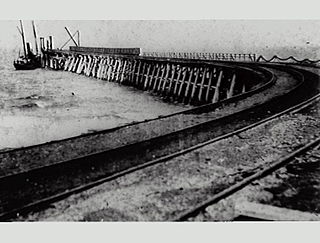
Bulli is a northern suburb of Wollongong situated on the south coast of New South Wales, Australia. Bulli is possibly derived from an Aboriginal word signifying "double or two mountains", but other derivations have been suggested.

Gerringong is a town located about ten minutes drive south of Kiama in the Illawarra region of New South Wales, Australia in the Municipality of Kiama. At the 2016 census, Gerringong had a population of 3,966. One theory says that the name derives from an Aboriginal word meaning "fearful place".

Thirroul is a northern seaside suburb of the city of Wollongong, Australia. Situated between Austinmer and Bulli, it is approximately 13 kilometres north of Wollongong, and 69 km south of Sydney. It lies between the Pacific Ocean and a section of the Illawarra escarpment known as Lady Fuller Park, adjacent to Bulli Pass Scenic Reserve.

Coalcliff is a town on the coast of New South Wales, Australia, between Sydney and Wollongong. Together with Stanwell Park it belongs to the Little Bulli indentation of the northern Illawarra coast strip.

Clifton is a village on the coast of New South Wales, Australia, between Sydney and Wollongong. Along with nearby Coalcliff, the village began life as a coal-mining centre. It is situated on a narrow area between the sea and the Illawarra escarpment. The electrified South Coast railway line passes through, but the station at Clifton was closed in 1915.

Austinmer is a northern village of Wollongong on the south coast of New South Wales, Australia. It sits in the northern Illawarra region, south of Stanwell Park and immediately north of Thirroul.

Bellambi is a suburb of Wollongong in the Illawarra region of New South Wales, Australia. It has a railway station on the NSW TrainLink South Coast Line.

Andrew Augustus Lysaght was an Australian politician. He was a Labor Party member of the New South Wales Legislative Assembly from 1925 until 1933, representing the electorate of Bulli. He served as Attorney-General of New South Wales under Jack Lang in 1927 and 1930-31.

The Merksworth was an iron steamer screw built in 1874 at, Paisley, that was wrecked when it swamped whilst carrying coal between Newcastle and Sydney and was lost off Newcastle, Stockton Beach, New South Wales on 7 May 1898.
Albert Charles Willis was an Australian politician.

The Fitzroy Iron Works at Mittagong, New South Wales, was the first commercial iron smelting works in Australia. It first operated in 1848.

Port Kembla is a man-made cargo port or artificial harbour, with an outer harbour protected by breakwaters and an inner harbour constructed by dredging, located in the Illawarra region of New South Wales, Australia.

Joseph Earl Cherry Mitchell was an English-born Australian politician and businessman.
The Coastal coal-carrying trade of New South Wales involved the shipping of coal—mainly for local consumption but also for export or coal bunkering—by sea to Sydney from the northern and southern coal fields of New South Wales. It took place in the 19th and 20th centuries. It should not be confused with the export coal trade, which still exists today. There was also an interstate trade, carrying coal and coke to other Australian states that did not have local sources of black coal.

Sixty-miler (60-miler) is the colloquial name for the ships that were used in the coastal coal trade of New South Wales, Australia. The sixty milers delivered coal to Sydney Harbour from ports and ocean jetties to the north and south of Sydney. The name refers to the approximate distance by sea from the Hunter River to Sydney.

Wollongong Harbour Precinct is a heritage-listed shipping harbour at Cliff Road and Endeavour Drive, Wollongong, City of Wollongong, New South Wales, Australia. It was built from 1837. The historic precinct includes Belmore Basin, Government Dam, Government Basin, Stockade Point, Flagstaff Hill, Signal Hill, Brighton Beach, Boat Harbour and Fortress Hill. It was added to the New South Wales State Heritage Register on 5 May 2010.

The Heritage Hotel is a heritage-listed Australian pub at 240 Princes Highway, Bulli, City of Wollongong, New South Wales, Australia. It was designed by William Kerwood and built in 1889. It was historically known as the Family Hotel or Bulli Family Hotel. It was added to the New South Wales State Heritage Register on 2 April 1999.
The Stone Fleet was the colloquial name for the small coastal ships that carried crushed-stone construction aggregate from the ports of Kiama and Shellharbour, and from nearby ocean jetties in the Illawarra to Sydney. The coastal shipping trade carried on by these ships was known colloquially as the 'Stone Trade' or 'Blue Diamond Trade'. The trade ended finally in 2011.
Bulli Shire was a local government area in the Illawarra region of New South Wales, Australia.



















